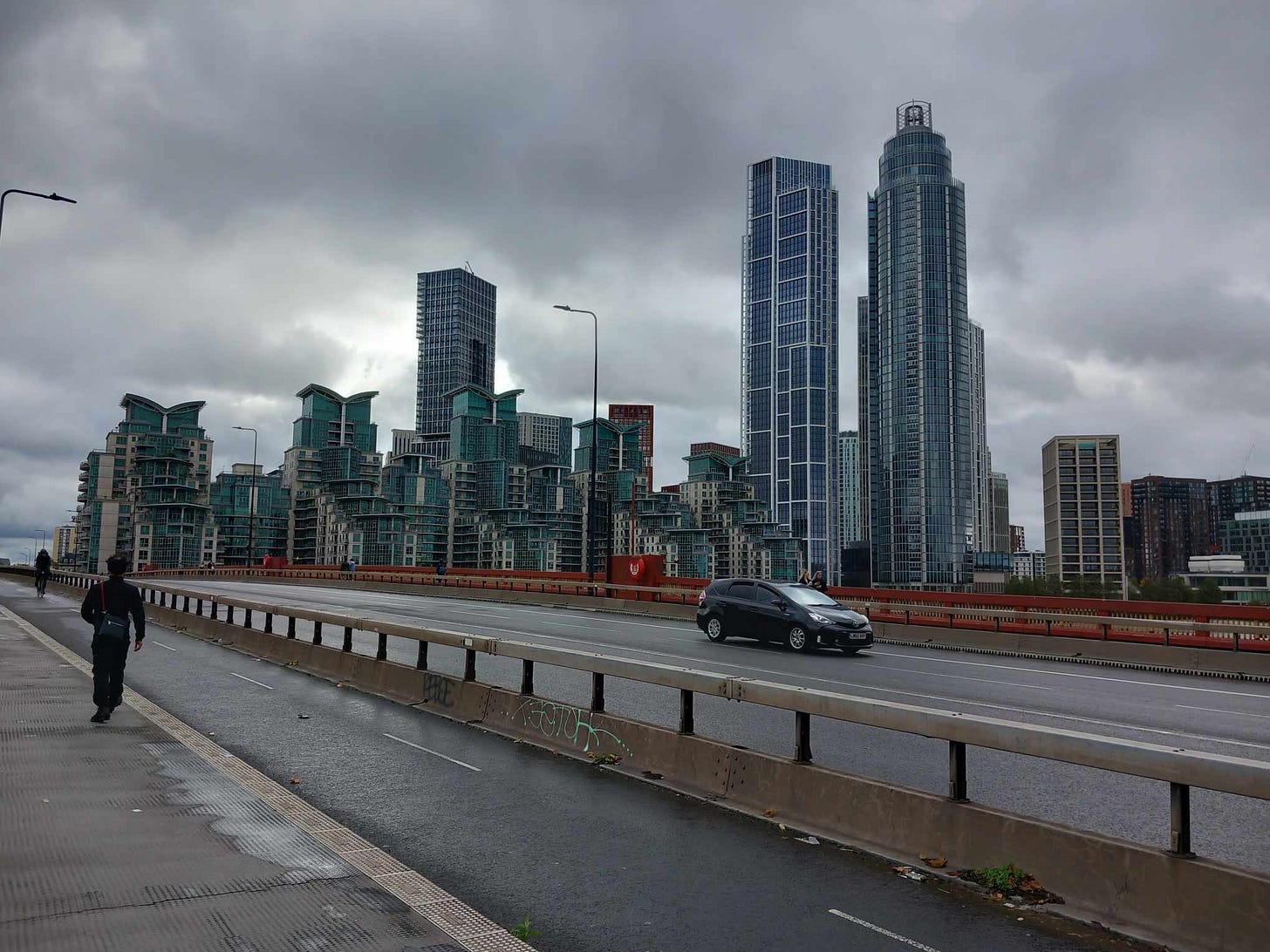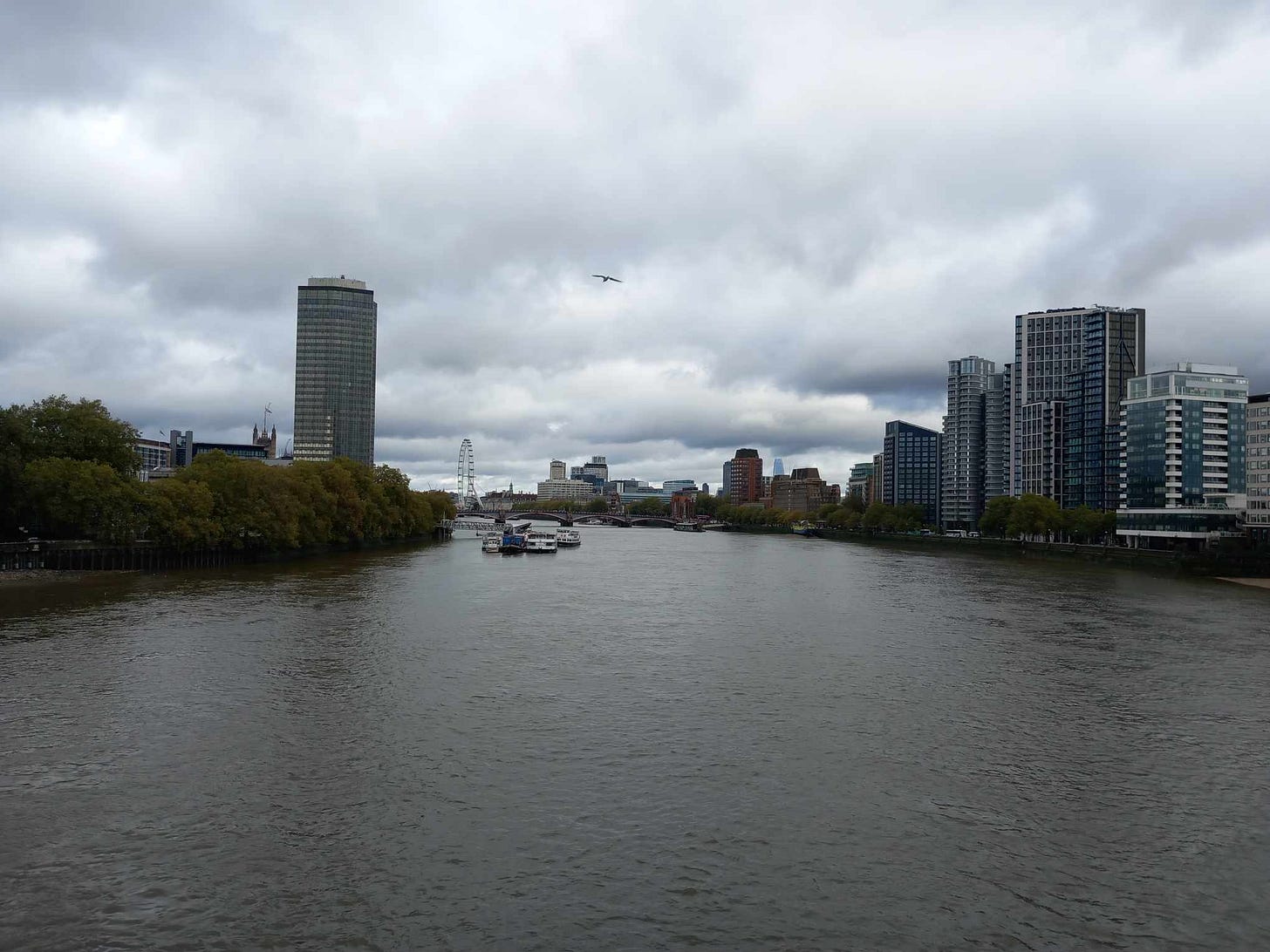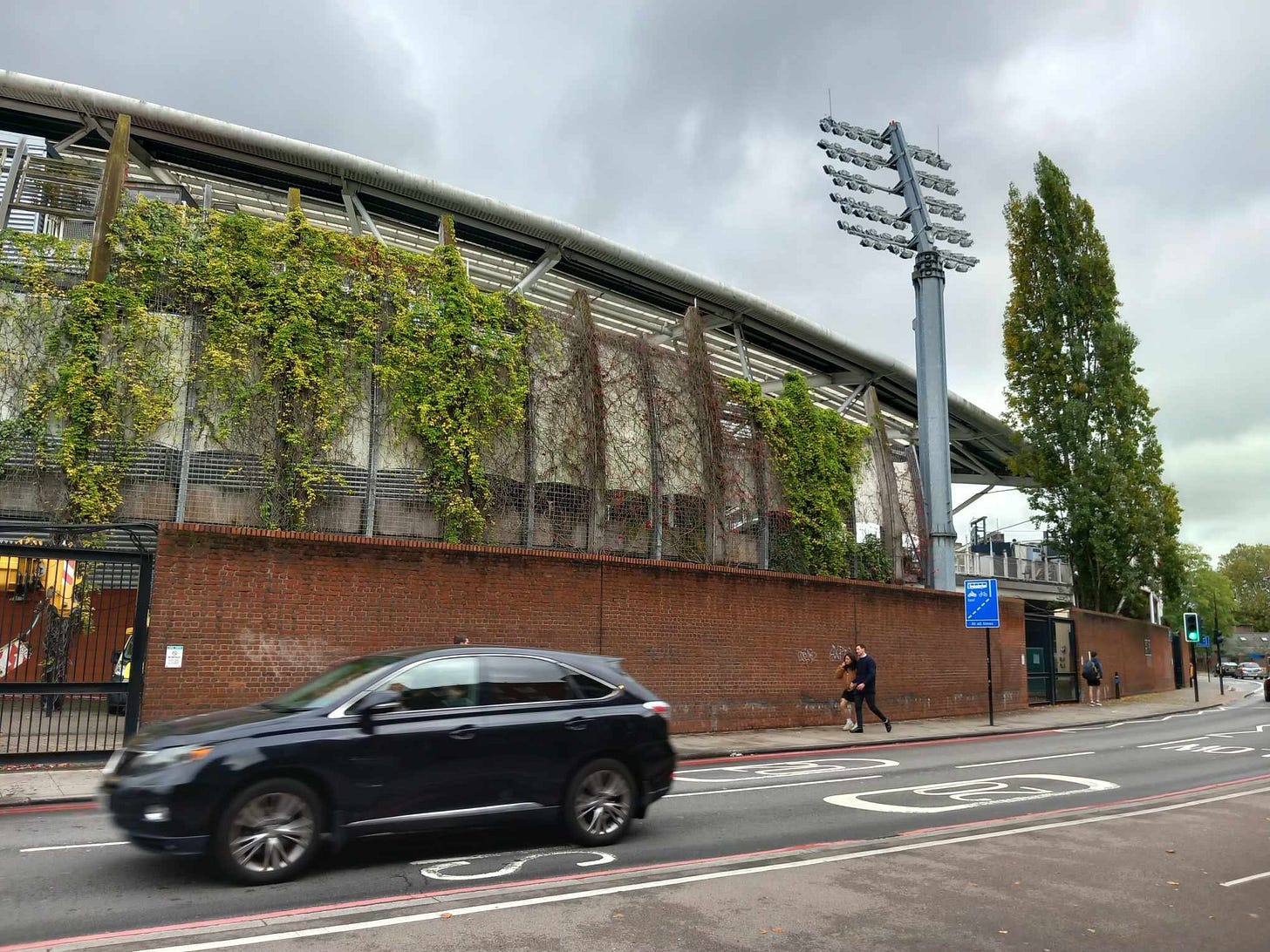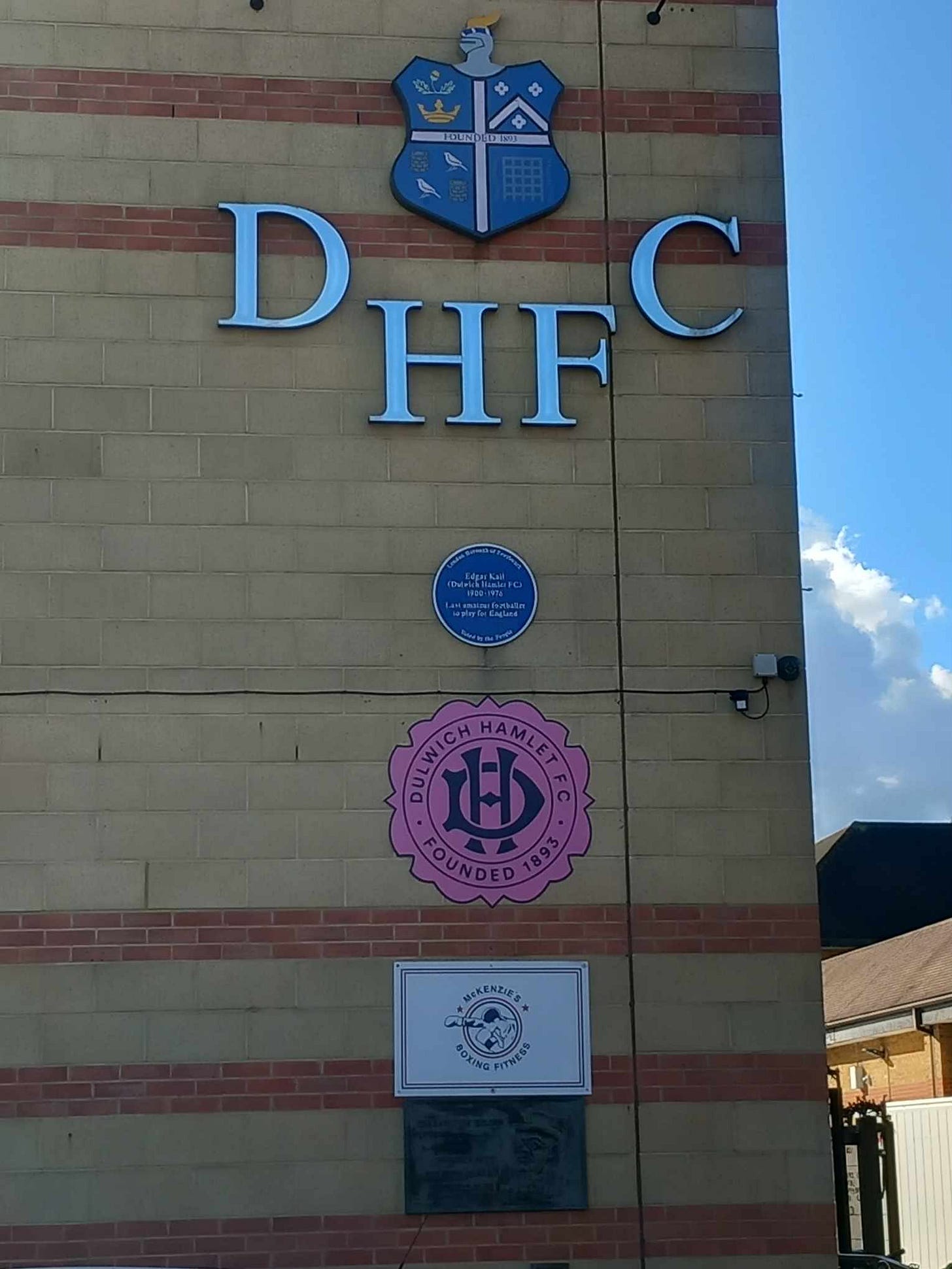Something of a Sport: A Day Out at Dulwich Hamlet
Dulwich Hamlet Football Club has been at the romantic heart of Southeast London since the late 19th century. So how do its progressive values sit in its local community?
Many people don’t like – or aren’t willing to accept – football’s place in society. And I don’t just mean that millions (if not billions) of people globally watch it religiously every weekend. It is genuinely a conduit for socio-economic, political and personal alignment and engagement. As Oli Dugmore said once on the PoliticsJoe podcast: ‘Football *is* political’.
It's true that here in the UK, football is probably less political than almost anywhere else, especially at the higher echelons. But at a grassroots level, clubs frequently leverage political and social idealism to be a vital cog in their local communities.
The first of a new writing series, this piece charts my travels to Dulwich Hamlet last weekend. Hamlet is a club with a storied history in Southeast London, famous for its progressive values, community involvement and stadium atmosphere. Having heard about all this, I made the pilgrimage to Champion Hill to experience it for myself.
A Village in London
The conditions on the morning of Saturday 19th October are fairly unremarkable for Bristol at this time of year. The air is crisp and the pavements damp thanks to last night’s rain, the light dimmed by the remaining clouds. But there are still vast swathes of pale blue overhead, making the day bright and the sky feel massive.
Parts of the M4 motorway – the main artery linking London to England’s southwest – are closed, so the coach is diverted. It takes us through scenes that could best be described as pastoral, the beating sun emphasising the idyllic green of the meadows on either side of the road.
As the plains become more waterlogged and the woods shrouded in mist, there’s a sort of timeworn eeriness to the landscape that feels worlds away from the setting of today’s game.
We enter London via its sprawling, characterful west side where stylish car showrooms and futuristic office buildings rub shoulders with the grey, brutalist tower blocks synonymous with British inner cities. Almost anywhere else this architectural contradiction would be incongruous, but somehow here it makes sense.
Upon arriving in Victoria, I decide to walk down the Peckham – Camberwell Road from the almost intangible, wealth-washed gleam of Kensington. It takes me over the Vauxhall Bridge, with its epic views and citadel of otherworldly, glistening and green-hewed buildings on the right-hand side. It takes me past The Oval, the Surrey County Cricket Ground which looks like something out of The Last of Us, spindly shrubbery spooling out of its crags.
Dulwich itself is a world apart. Crossing the border from Lambeth, I’m met with cottages better suited to Cornwall than a metropolis. Even as I get further into the centre, it feels more like a leafy regional town. A cluster of artisan cafes, estate agents and delicatessens certainly create a buzz, even if it does scream yuppy affluence. It’s only when Canary Wharf appears in the distance on the walk to Champion Hill, the Dulwich Hamlet stadium, that I actually remember where I am.
Frankly, it doesn’t feel much like a community that revolves around a massively historic football club. So where does Dulwich Hamlet fit in this pretty picture?
A Heart-on-Sleeve Club
There can be no doubt that Dulwich Hamlet has been a cultural stalwart in Southeast London since it was founded in 1893. Though they’ve always been semi-professional, their role as the romantic heart of the borough, whether self-imposed or a product of osmosis, has only grown over the years.
Founded by Lorraine ‘Pa’ Wilson, its playing history is split between the Isthmian League (which covers the semi-professional game in Greater, East and Southeast London) and the National League South. The legacy of several club legends is everywhere around Champion Hill. The stadium is on Edgar Kail Way; Kail played for Hamlet for 14 years after the First World War, scoring 427 goals and helping them to Isthmian League titles in 1920, 1926 and 1933.
The site’s main stand is named after Tommy Jover, a firecracker left-winger who devoted a remarkable seven decades of his life to the club; as a player, an official and eventually as the club’s president from 1985 until his death at the age of 91 in 2008.
In recent years, they’ve flitted between the two leagues with a fair amount of turbulence. They were lucky to avoid relegation from the NLS in the 2019-20 season but staged a fantastically resistant coup the following year to finish 10th: their highest position ever.
The whirlwind wreaked havoc again in 2022-23, however. The replacement of former-player-turned-coach Gavin Rose by Paul Barnes seemed to upset the cart more than expected; he departed after gaining just one point from 10 games. Hakan Heyrettin – a larger-than-life character who still helms the club today – fared better, but losing to Chippenham on the final day sealed Hamlet’s relegation fate.
Fittingly for a club with Hamlet’s proud values, the women’s team’s trajectory has been more successful. In existence since 2019, they are yet to be promoted beyond the fifth stage of the game, but they made history in 2023 by reaching Round Two of the Women’s FA Cup, losing to Gillingham in front of a record 631-person crowd.
Hamlet’s history is gripping, but it’s those heart-on-sleeve ethics that really sets it apart.
Collectivism for Progression
A righteous anti-fascist worldview is cemented in banners and literature all over Champion Hill. ‘Show Racism the Red Card’ pronounces one, and it feels like far more than a platitude. ‘I Stand With Migrant Workers’ reads another in the Tommy Jover stand.
Perhaps most intriguing is one behind the home goal that reads ‘Dulwich Hamlet and Altona 93 Stand Against Homophobia’. Altona 93 are a semi-professional club from Hamburg, Germany, who share a long-standing association and philosophical lineage with Hamlet. The teams have played each other several times over the years, defiantly flying their collective flags for progression.
And happily, none of this is lip service. In the last two months Hamlet have held fundraisers for both the Children’s Cancer & Leukemia Group and Southeast London Mind for Childhood Cancer Awareness Month and Mental Health Awareness Month respectively.
The club’s Supporter’s Trust regularly contributes to local food banks, the annual WrapUp London initiative, LGBTQI+ organisations (the Stonewall IPA offered at the club bar is delicious, by the way) and their charity partners.
Ultras groups don’t really exist in the UK, but if they did then ‘The Rabble’ could nominally count as one. They couldn’t be further from the far-right miscreants that generally associated with the Ultras tag, though. Their website proudly states: ‘Anyone shouting anything sexist or homophobic will be told to do one very quickly’.
Socio-political sentiment may largely be anathema in the UK game, but Dulwich Hamlet are a prime example of forward-thinking spirit and fandom in a realm mostly free of corporate interest.
The Party Starts (?)
Hamlet’s start to the season has been uneven, but as of today they are on an upwards slant. They are currently 5th in the Isthmian League having won four of their last five games, including two wins away from home. They have 17 out of a total 30 points.
Their opponents, Billericay Town, are two points clear of them in third place. They are as yet unbeaten this season and have a far superior goal difference (15 to Hamlet’s three).
Having not been to a non-league game probably since playing for my village side in my early teens, I’m not quite sure how much separates the teams materially at this level. I make my way into Champion Hill in beaming, glistening sunlight and 16-degree warmth to find a fairly sedate vibe. There is clearly a family-friendly focus here, and it’s great to initially see people of all ages (some as young as about two) seemingly engaged.
Many people are sporting replica shirts, and there’s a genuinely homely feel around the Tommy Jover stand behind the dugouts. It’s not the jubilant party atmosphere I’d been told to expect, but it does carry the wholesome, welcoming ambiance of the club. And of course, being able to drink in the stands (illegal at professional games since 1985 in the UK) is a revelation.
Prophetic Friends in the Pint Queue
The first half of the game is fun; tense, a little tetchy (three Hamlet players are yellow carded in fairly quick succession) and interesting. Billericay look more threatening going forwards in general, though the best chance of the game falls to the home side, a powerful shot from a tricky left-hand angle that cannonballs off the right post. Things slow after the first 20 minutes, brought back into life by Billericay scoring a scrappy goal from a corner just before half-time.
In the break I head to the bar, where I get chatting to a local teacher. Both of us comment on how flat the atmosphere has been so far, and it turns out that that may not be complete misnomer. ‘I’ve been coming a few times a season for the last seven or eight years,’ he tells me. ‘There often isn’t much atmosphere here; it’s just kind of a reason for people to get pissed.’
His insight turns out to be prophetic, because the second half is a bit of a non-event. I head over to where The Rabble base themselves in the stadium’s north end, hoping to be swept up in a maelstrom of singing, drums and togetherness.
There is some of that, but most people aren’t paying a massive amount of attention. The crew become most vocal during Hamlet’s handful of semi-decent chances, but the lack of intensity on the pitch means many people seem more focused on their pints and friendships.
The game ends 1-0 to Billericay Town, and I’m surprised by how few people stick around for the aftermath. I head up to the bar to catch the first half of the Arsenal game; it’s vibrant and buzzy, but the somewhat lacklustre game means that there’s very little reason to keep talking about it.
Something of a Movement
On a busy bus back to Bristol that evening, I reflect on Dulwich Hamlet’s place both in its own societal microclimate and the game’s bigger picture. If we’re talking in cliches, the club is something of a movement. It routinely fights the good fight as an institution and is completely unashamed in its convictions.
And clearly, there are plenty of people who bring themselves and their families here every Saturday to enjoy football in the most traditional sense. Despite the disconnect between the ethos and matchday vibe on this occasion, their history as a community beacon makes total sense.
Perhaps it’s not a surprise at this level, but it’s not actually football as a sport that makes a difference here; it’s how it’s used as a catalyst for a nice day out. Football fans know this, but sometimes that’s all this game needs to be.











